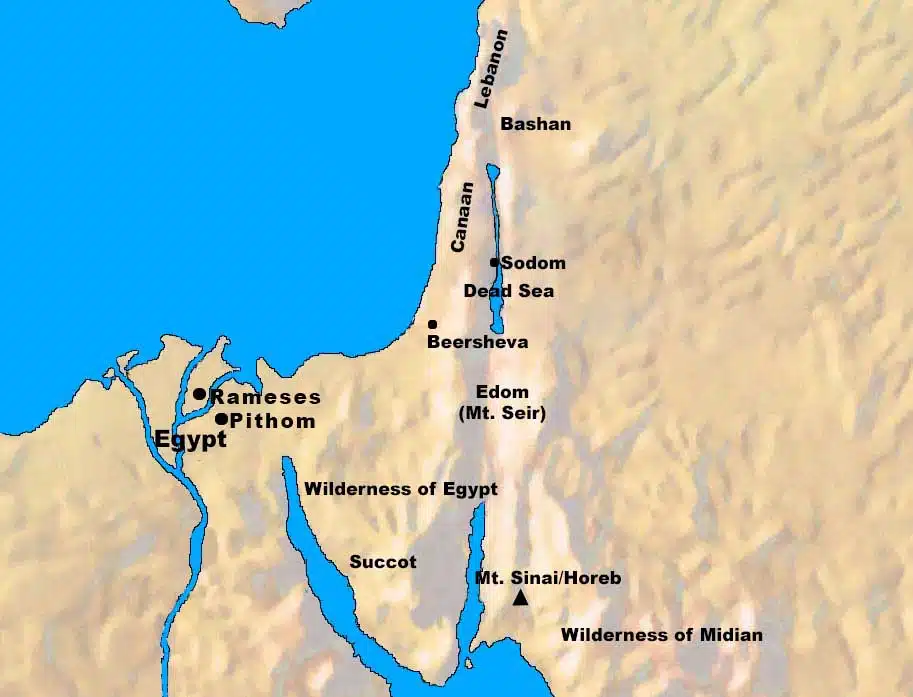The LORD describes how the High Priest’s robe was to be made. The account of the making of the golden plate is in Exodus 39:22 – 27.
There was instruction to make a robe (Hebrew “me’il”) that was to be worn over the undergarments but under the ephod. It probably extended below the knees.
The robe was to be made all of blue. The Hebrew word for “blue” (“tekeleth”) can also be translated “purple” or “violet,” which could mean that the color here was bluish-purple.
There was to be an opening at its top in the middle of it to allow it to be pulled over the priest’s head, like an undershirt. This makes it clear the robe goes on under the ephod. Also, around its opening there shall be a binding of woven work, like the opening of a coat of mail, so that it will not be torn. The hole for the head was to be reinforced with woven work to prevent a tear. Any tear in the fabric could be considered an impurity or defect, making it unfit for worship of the holy LORD. So, the weavers were to create a binding of woven work to reinforce the opening to prevent it from tearing or being frayed.
The High Priest is prohibited from tearing his robe in Leviticus 21:10, “The priest who is the highest among his brothers, on whose head the anointing oil has been poured and who has been consecrated to wear the garments, shall not uncover his head nor tear his clothes.” But in Matt 26:65, Caiaphas violates this commandment, “Then the high priest tore his robes and said, ‘He has blasphemed! What further need do we have of witnesses? Behold, you have now heard the blasphemy.’” In that situation, Jesus was accused of blasphemy, yet it was really Caiaphas who was blaspheming the High Priest’s office. His total disregard for God’s commands is shown by his act of tearing his robes.
The robe of the high priest was also to have on its hem pomegranates of blue and purple and scarlet material, all around on its hem. Being on its hem could mean that the pomegranates were woven into the fabric along the bottom of the robe (its hem), or it could mean that they were items that hung down from the hem. Pomegranates probably signified abundance, and having them on the hem of the robe indicated that the LORD was the source of this abundance.
Also, on the hem of the robe were to be bells of gold between them all around. Specifically, they needed to alternate the bells of gold and pomegranates, a golden bell and a pomegranate, a golden bell and a pomegranate, all around on the hem of the robe. These were actual bells that made sounds.
The purpose of the bells is stated in verse 35. They were put on the robe for Aaron when he ministers. Specifically, they were put on the robe so the tinkling shall be heard when he enters and leaves the holy place before the Lord, so that he will not die. As long as the bells were tinkling everyone close by (probably the priests) would know that everything was going well with the high priest’s activities in the Holy of Holies. Because these were functioning bells, it seems more likely that both the bells and the pomegranates hung from the hem.
Most translations say so that he will not die, which reads as though the bells prevent the priest from dying. The phrase literally is “and he does not die,” which could indicate the obvious fact that if the folks waiting outside the holy place in the tent are hearing the bells, it means the high priest is still alive. This seems more likely. Otherwise God would be saying the bells prevented the priest from death. More likely the bells are a signal to the folks outside that the priest working in the holy place is still alive. If something went wrong, and the high priest was dead, the bells would be silent. This indicates that the high priest was in danger of his life if he ministered in the holy place improperly.
Biblical Text
31 “You shall make the robe of the ephod all of blue. 32 There shall be an opening at its top in the middle of it; around its opening there shall be a binding of woven work, like the opening of a coat of mail, so that it will not be torn. 33 You shall make on its hem pomegranates of blue and purple and scarlet material, all around on its hem, and bells of gold between them all around: 34 a golden bell and a pomegranate, a golden bell and a pomegranate, all around on the hem of the robe. 35 It shall be on Aaron when he ministers; and its tinkling shall be heard when he enters and leaves the holy place before the Lord, so that he will not die.
Check out our other commentaries:
-
Matthew 26:30 meaning
Jesus and His disciples sing a hymn and leave the upper room for the Mount of Olives....... -
Zephaniah 3:1-7 meaning
Zephaniah pronounces judgment against Judah and her wicked rulers, prophets, and priests. God sent them ample examples of nations being disciplined for evil, but rather...... -
Romans 8:28-30 meaning
God promises that He causes every circumstance to conform believers to the image of Christ, with the intent that many would rule with Christ as...... -
Romans 15:25-27 meaning
Paul is not planning to travel to Spain by way of Rome immediately; first, he will make a trip to Jerusalem to deliver a contribution...... -
Genesis 19:30-33 meaning
Lot and his two daughters fled to a cave in the mountains. The oldest daughter devised a plan and gave Lot too much wine to......



